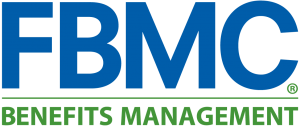In the Great Resignation era, benefits have been key for companies looking to combat high levels of employee turnover – but it’s not just about offering a great package. It’s also vital that employers look for ways to drive employee engagement and participation in those benefits.
Put simply, more engagement means happier employees. This works in two ways: First, employees who are aware of and use the benefits available to them are likely to feel more appreciated by their employer. Second, with benefits designed to improve overall employee wellness, it’s no surprise that taking advantage of them can boost overall happiness.
Even better? Engaged and healthy employees are also less likely to seek out new jobs. A survey from Gallup found that employers in the top 20% of employee engagement saw a 59% reduction in turnover.
But engagement can be elusive – so how do you generate it? Unsurprisingly, clear communication is key. Employers should strive to create open dialogue throughout the year, from driving enrollment to planning for the next round of offerings.
Stage One: Enrollment
- Enrollment can feel overwhelming, particularly as plans offer more and more choices. It’s crucial that employers provide clear opportunities for their employees to ask questions, access resources and feel empowered when selecting their benefits.
- While large-scale benefits fairs were often a go-to solution, COVID-19 has forced benefits teams to innovate. “Expansion of technology to allow for virtual meetings and enhanced decision-making tools have been notable in supporting employee engagement,” FBMC Managing Principal Vickie Whaley explained. Digital solutions, like virtual office hours or webinars, are accessible ways for employees to get the answers they need online and on their own time. These options more readily align with enrollees’ busy schedules.
- Technology can also be implemented to simplify enrollment. Consider options like fillable forms that can streamline the process – and eliminate potential typos or mistakes that can slow or halt forward progress. Or, implement a program that guides employees through enrollment step by step, clarifying questions they might have along the way and ensuring they make the best selections for their lifestyle. “Many studies show employees will dedicate a very limited amount of time to reviewing benefit options,” notes Whaley. “Alternative solutions that provide learning opportunities along the way can have a significant impact on increased employee engagement.”
- Alternatively, requiring employees to opt-out – not opt-in – is growing in popularity and has a strong track record for improving participation in retirement plans. In fact, 90% of participants will remain in a retirement savings plan once automatically enrolled. “We are seeing more employers using the opt-out process to bring more attention to their benefit offerings,” Whaley confirms.
- If considering an opt-out solution, be sure to implement the transition thoughtfully: “To ensure long-term employees are not adversely affected in the first year of roll-out, it is important to be well-informed about the process and implications of the changes. Working with a broker who has experience with these plan types is critical to avoid increasing employee dissatisfaction.”
Stage Two: Participation
- Communication and education shouldn’t end after enrollment. Many employees report feeling uncertain or confused about their benefits. A survey from Voya Financial found that 35% of employees don’t fully understand the benefits they’re enrolled in. In certain groups, like Millennials, that number is even higher.
- Conversely, 66% of employees say they want their employer to step in and help them better understand their benefits. Much like in the enrollment stage, a series of emails or webinars can help remind employees of the great offerings they have available and clear up any confusion about taking advantage of them. Segmenting employees by life stage or needs can further personalize communication, ensuring it feels relevant to individuals and captures their attention.
- Similarly, be sure employees have the opportunity to use their benefits. Flexible work hours, for example, ensure employees can take time for health appointments. Bringing financial counselors to the office can help employees take advantage of advisors without needing to step away for long. Eliminate barriers where possible to provide clear paths to participation – and be sure to communicate them throughout the year, too.
Stage Three: Feedback
- Frequent feedback and check-ins can ensure employees feel heard and understood, and help employers benchmark their benefits throughout the year. 89% of HR leaders surveyed by SHRM said consistent peer feedback has had a positive impact on their organizations. Employees take notice, too: In the 2022 HSA Bank Health & Wealth Index, 96% of employees agreed that businesses demonstrating empathy is a key way to advance retention.
- This open conversation can influence benefits planning for subsequent years, highlighting areas that may need to be adjusted to better align with employee needs. “Many employers struggle with identifying ways to engage their employees because of the limited bandwidth of HR teams, as well as an often-limiting focus on medical benefits,” Whaley says. “Through opening a dialogue with employees, HR professionals can evaluate solutions holistically and work toward a system that benefits everyone.”
Ready to start the conversation? FBMC’s team is here to help companies create a benefits plan that employees want to participate in. To learn more, contact us today.




